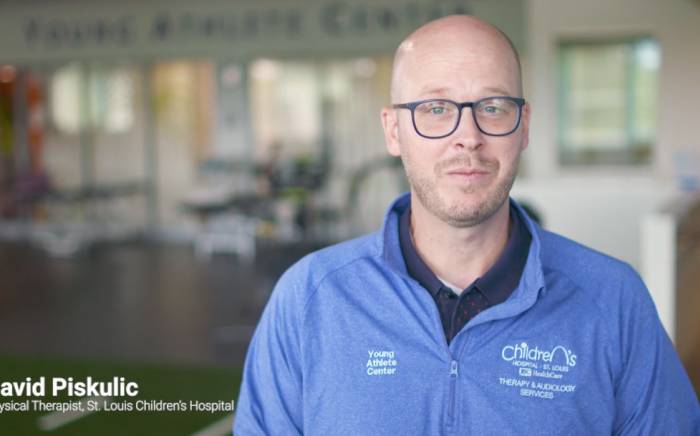Overview
Hyperbilirubinemia happens when there is too much bilirubin in your baby’s blood.
Bilirubin is made by the breakdown of red blood cells. It’s hard for babies to get rid of bilirubin at first. It can build up in their blood, tissues, and fluids.
Bilirubin has a color. It makes a baby’s skin, eyes, and other tissues turn yellow (jaundice). Jaundice may first appear when your baby is born. Or it may also show up any time after birth.
Causes
During pregnancy, the placenta removes bilirubin from your baby’s blood. When a baby is born, the baby's liver takes over this job. Your baby may have too much bilirubin for many reasons.
Physiologic jaundice
During the first few days of life, babies aren’t able to get rid of much bilirubin. This normal type of jaundice happens as a response to a baby’s reduced ability to remove bilirubin. But it may be hard at first to tell if jaundice is being caused by another problem.
Breastfeeding failure jaundice
Some babies don’t breastfeed well at first. This causes breastfeeding failure jaundice. Not feeding well makes your baby dehydrated. It also causes your baby to urinate less. This makes bilirubin build up in your baby’s body. Babies born between 34 to 36 weeks of pregnancy are more likely to get this problem. These babies often don’t have the coordination and strength to breastfeed well. But this condition is also common in early-term newborns (37 to 38 weeks). It can also happen in any newborns who have had a difficult start, especially if they were separated from their mother and unable to feed frequently. It usually gets better once a baby learns how to breastfeed well.
Breastmilk jaundice
About 2% of breastfed babies get jaundice. This happens later in their first week of life. It peaks at about 2 weeks of age. It can last 3 to 12 weeks. It is not dangerous but tests may need to be done for other problems that are dangerous. This issue may be caused by a substance in breastmilk. This substance may increase how much bilirubin the baby's body can reabsorb.
Jaundice from hemolysis
If your baby has Rh disease (hemolytic disease of the newborn due to having a different blood type from the mother's), he or she may get this type of jaundice. This issue can also be from having too many red blood cells or rare problems in which the red blood cells are more fragile than normal. Hemolysis is the word for the process in which the red blood cells break down and release bilirubin.
Jaundice caused by poor liver function
Jaundice can happen if your baby’s liver doesn’t work well. This may be because of an infection or other factors. The liver is the part of the body most responsible for getting rid of bilirubin. A problem with the liver can cause higher levels of bilirubin.
Risk Factors
About 60% of full-term newborns get jaundice. So do 80% of premature babies. Babies born to mothers with diabetes or Rh disease are more likely to have this condition.
Symptoms
Symptoms can occur a bit differently in each child. They can include:
- Yellowing of your baby’s skin and the whites of his or her eyes. This often starts on a baby’s face and moves down his or her body.
- Poor feeding
- Lack of energy
The symptoms of this health problem may be similar to symptoms of other conditions. Make sure your child sees a healthcare provider for a diagnosis.
Diagnosis
The timing of when your child’s jaundice first starts matters. It may help his or her healthcare provider make a diagnosis.
- First 24 hours. This type of jaundice is often serious. Your child will likely need treatment right away.
- Second or third day. This is often physiologic jaundice. Sometimes it can be a more serious type of jaundice. It's important to be sure the baby is getting enough milk at this point.
- Toward the end of the first week. This type of jaundice may be from breastmilk jaundice but may be due to an infection or other rare serious problems.
- In the second week. This is often caused by breastmilk jaundice but may be caused by rare liver problems.
Your child’s healthcare provider may do the following tests to confirm the diagnosis:
- Direct and indirect bilirubin levels. These levels show if bilirubin is bound with other substances by your child’s liver. Normal physiologic jaundice involves indirect bilirubin. Jaundice due to more serious problems can have high levels of either type of bilirubin.
- Red blood cell counts
- Blood type and testing for Rh incompatibility (Coomb's test)
Treatment
Treatment will depend on your child’s symptoms, age, and general health. It will also depend on how severe the condition is.
Phototherapy
Bilirubin absorbs light. High bilirubin levels often decrease when a baby is put under special blue spectrum lights. This is called phototherapy. Your child may get this treatment in the day and night. It may take several hours for it to start working. During light treatment, your baby’s eye will be protected. Your baby’s healthcare provider will check your baby’s temperature. He or she will also test your baby’s bilirubin levels. This will tell if phototherapy is working.
Fiber optic blanket
A fiber optic blanket is another form of phototherapy. The blanket is usually put under your baby. It may be used alone or with regular phototherapy.
Exchange transfusion
This treatment removes your baby’s blood that has a high bilirubin level. It replaces it with fresh blood that has a normal bilirubin level. This raises your baby’s red blood cell count. It also lowers his or her bilirubin level. During the procedure, your baby will switch between giving and getting small amounts of blood. This will be done through a vein or artery in the baby's umbilical cord. It is only done in an intensive care nursery when bilirubin levels are extremely high. Your baby may need to have this procedure again if his or her bilirubin levels stay high.
Feeding with breastmilk
The American Academy of Pediatrics says that you should keep breastfeeding a baby with jaundice. If your baby has not been getting enough milk at the breast, you may need to supplement with pumped breastmilk or formula.
Treating any underlying cause of the condition
This may include treating an infection. In very rare conditions a liver transplant may be needed.
Complications
High levels of bilirubin can travel to your baby’s brain. This can cause seizures and brain damage. This is called kernicterus.
Prevention
This condition can’t really be prevented except in the case of breastfeeding failure jaundice. Feedings should start within the first hour of life and continue at least every 2 or 3 hours, or sooner if the baby shows signs of wanting to eat. The more premature the baby, the more likely he or she is to need supplements of expressed milk or formula at first. For all babies, spotting jaundice early and getting treatment right away are key. This can stop your baby’s bilirubin levels from rising to dangerous levels.
Key Points
- Hyperbilirubinemia happens when there is too much bilirubin in your baby’s blood.
- About 60% of full-term newborns and 80% of premature babies get jaundice.
- The most common symptom is yellowing of your baby’s skin and the whites of his or her eyes.
- The timing of when your child’s jaundice first starts matters. It can help his or her healthcare provider make a diagnosis.
- Make sure you feed your baby early and often.
- Spotting jaundice early and getting treatment right away are key. This can stop your child’s bilirubin from rising to dangerous levels.
Next Steps
Tips to help you get the most from a visit to your child’s healthcare provider:
- The name of the test or procedure
- The reason your child is having the test or procedure
- What results to expect and what they mean
- The risks and benefits of the test or procedure
- When and where your child is to have the test or procedure
- Who will do the procedure and what that person’s qualifications are
- What would happen if your child did not have the test or procedure
- Any alternative tests or procedures to think about
- When and how will you get the results
- Who to call after the test or procedure if you have questions or your child has problems
- How much will you have to pay for the test or procedure








